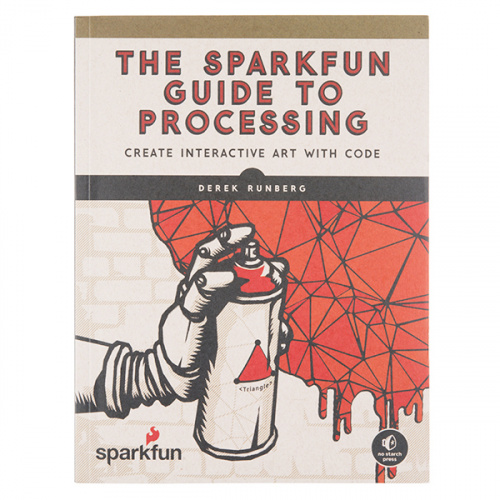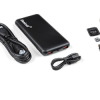Willkommen! Happy Friday, everyone! We have a couple of new products (and a special treat for our Photoshop enthusiasts with spare time on their hands) that we are pretty proud of, just waiting for your viewing pleasure. Additionally, we are one day away from Oktoberfest and you know what that means: a product demo to help keep yourself safe during the world's largest Volksfest! Let's take a look.
Yes, we realize Oktoberfest starts tomorrow and not next week, but it WAS next week when we started filming, and we'd like to see you try drinking for science and getting everything done on time.
Danke, Shawn. We always appreciate you breathing on things for science. If you're interested in making your own BAC Data Lager, Shawn put together a project wishlist and a GitHub repo, just for you! Let's move on to our new products!
The SHT15 Breakout is an easy to use, highly accurate digital temperature and humidity sensor. This board has been fully calibrated and offers high precision and excellent long-term stability at low cost. The digital CMOSens® technology integrates two sensors and readout circuitry on one single chip. All you need is two lines for 2-wire communication, and you’ll have relative humidity and temperature readings to help you sense the world around you!
Late last week we finally started shipping out The SparkFun Guide to Processing, written by SparkFun's very own Curriculum Curator, Derek Runberg. This book teaches you to craft your own digital artwork and even combine it with hardware—no prior programming experience required. Over the course of the book, you’ll learn the basics by drawing simple shapes, move on to photo editing and video manipulation, and ultimately affect the physical world by using Processing with an Arduino.
And now, because we have this amazing image of semi-inebriated Shawn's head on hand from the Oktoberfest shoot, we encourage you to kick off your weekend by Photoshopping it onto something amusing and sharing it with us, just for funsies. Behold:
That's it for this week, volks. We hope you enjoyed our new video and these new products. We will, as always, be back next Friday with more products for you to check out. We'll see you then!











The video was a lot of fun throughout, but the photoshopped button-box pic at the end was the clincher!
Hey Shawn. What kind of calibration did you do for the sensor so you can get an accurate BAC reading? My idea would've been to also have an actual BAC reader there to compare numbers.
The reason why I bring this up is, the BAC readers used by law enforcement wants you to breathe into a tube (a good way to keep other byproducts out like if you spill beer on your shirt/jacket) and those tend to be pretty accurate (down to .01% error). Plus, the MQ-3 looks to have an okay resolution for the PPM for sensing.
Either way, cool project.
None. It's pretty unscientific :) I was able to convert ADC readings to PPM and then to BAC, but I don't have the equipment to calibrate the sensor. Nootropic Design has a great post on trying to calibrate the MQ-3. However, it's a lot of fun to measure relative alcohol content and watch it fluctuate.
Devices like this one: http://www.repcomarketinginc.com/Pages/default.aspx are used for calibration of BAC interlocks and police grade instruments. The test solution is a mix of water and ethanol with approximately the same percentage of ethanol as the blood you're trying to simulate. (I'd think it would be exactly the same, but it's claimed to be different by an amount that is a trade secret) The simulator heats the fluid to 34 degrees C, stirs it, and has a tube with holes so air can be blown into the bottom of the jar. There's a tube drawing air from the space above the liquid that is attached to the unit under test.
It'd still be interesting to do this again with an off the shelf product and record those readings and see how close your data was.
Realize that while .01% error sounds pretty good, that is only one part in eight of the legal limit. However, the fuel cell based BAC readers are generally more accurate than the (probably) tin oxide sensor Shawn used.
Fuel cells tend to be ethanol specific while the solid state sensors respond to a variety of chemicals. (possibly including acetone, which can be a product of the human body)
Just because.
I just noticed the name of the wishlist. Great groaner of a pun!
Do you have the public link to the data set that you generated there? I'd be interested in looking at the full curve.
Of the BAC over time? We didn't graph it, sadly. Only 2 data points were posted to data.sparkfun: https://data.sparkfun.com/sfe_bac as the WiFi at the venue was very spotty.
Bummer that the WiFi was giving you problems. But this exposes an enhancement for someone (else) to do. Local storage that caches data during connectivity issues, and then batch uploads when connectivity is good. Would have to track the time locally though... I'd like to take a crack at it, but right now I'm suffering from a lack of spare time and Mad-Money funds.
I don't know if it is the firewall here at work, but I keep getting "504 Gateway Time-out" errors trying to access https://data.sparkfun.com/
Yeah, that's a good point. Storing and then sending it off when you have a connection would be very helpful. I only recently learned of a mode for the Photon where you can get it to run code without a WiFi connection (silly that by default it NEEDS WiFi). data.sparkfun automatically appends a date/time stamp, but if you created an extra column for "recorded date/time," then it should be good enough to graph.
Is data.sparkfun still giving you troubles?